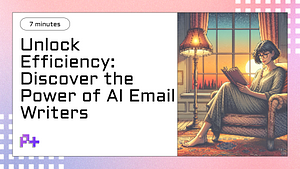1. Understanding B2B Lead Generation
B2B lead generation is a critical process in the business landscape, focusing on attracting and converting prospects into potential clients. It centers on identifying the target audience, understanding their needs, and engaging with them through various channels. At its core, lead outreach is the proactive approach of connecting with these prospects, often through strategies such as email marketing, social media engagement, and personalized communication. By effectively reaching out to potential clients, businesses can build relationships that eventually lead to sales opportunities.
One of the key components of successful B2B lead generation is the use of data-driven strategies. This includes leveraging analytics to identify the demographics and behaviors of potential leads, which helps in crafting tailored outreach campaigns. Additionally, using tools like customer relationship management (CRM) software can streamline the lead outreach process by organizing contact information and tracking interactions. By analyzing data, businesses can refine their messaging and approach, ensuring they resonate with the target audience and increase the chances of conversion.
Moreover, understanding the buyers journey is essential in B2B lead generation. Prospects typically go through several stages, from awareness to consideration and eventually to decision-making. Effective lead outreach involves addressing the specific concerns and interests of prospects at each stage. Providing valuable content, such as informative blog posts, webinars, or case studies, can nurture leads and move them further along the sales funnel. Ultimately, a strategic and well-executed lead outreach plan not only fosters trust and credibility but also enhances the likelihood of converting leads into loyal customers.
2. Key Strategies for Successful Lead Outreach
Successful lead outreach is essential for any business looking to expand its customer base and generate more sales. To effectively connect with potential clients, it’s important to employ a variety of strategies that not only capture attention but also foster relationships. Here, we will explore key strategies that can enhance your lead outreach efforts, ensuring you engage effectively with your target audience.
First and foremost, personalization is a cornerstone of effective lead outreach. Generic outreach messages often get lost in crowded inboxes, so taking the time to tailor your communication can make a significant difference. Use data to understand your leads’ preferences, pain points, and behaviors, and craft messages that resonate specifically with them. For instance, mentioning a recent achievement of the lead’s company or referencing a common industry challenge demonstrates that you’ve done your homework and genuinely care about their needs. This personalized approach not only increases the likelihood of a response but also establishes trust and rapport.
Another vital strategy is to leverage multiple channels for outreach. While email may be the most common method, diversifying your approach can yield better results. Consider integrating social media, phone calls, and even direct mail into your outreach plan. Platforms like LinkedIn are particularly effective for B2B lead outreach, allowing you to connect with decision-makers and share valuable content. Additionally, using a mix of outreach methods can cater to different preferences among your leads, increasing the chances of engagement. By being present on various platforms and utilizing a consistent message across them, you strengthen your brand visibility and improve your overall outreach effectiveness.
3. Essential Tools and Technologies for Effective Outreach
To execute effective lead outreach, leveraging the right tools and technologies is crucial. These resources streamline the outreach process, enhance communication, and ultimately improve your conversion rates. One of the essential categories of tools is Customer Relationship Management (CRM) systems. CRMs like HubSpot and Salesforce allow businesses to manage interactions with potential leads efficiently. They help track conversations, schedule follow-ups, and store valuable information about leads, ensuring personalized communication that resonates with the audience.
In addition to CRMs, email outreach tools play a vital role in maximizing the effectiveness of your campaigns. Platforms such as Mailchimp or Lemlist enable you to create targeted email campaigns that can be tailored to specific segments of your audience. These tools often come with features like A/B testing, analytics, and automation, which help you optimize your outreach strategies over time. By using these technologies, you can ensure that your messaging is not only reaching the right people but also being delivered at the right time, increasing the chances of engagement.
Finally, integrating social media management tools can further enhance your lead outreach efforts. Tools like Hootsuite or Buffer allow you to schedule posts, monitor engagement, and analyze performance across various platforms. Social media is a powerful channel for reaching potential leads, and by using these tools, you can maintain a consistent presence, engage with prospects, and build relationships that foster trust and credibility. Combining CRMs, email outreach, and social media management tools creates a robust framework for effective lead outreach, ensuring that your efforts are organized, measurable, and ultimately successful.
4. Measuring the Success of Your Lead Outreach Efforts
Measuring the success of your lead outreach efforts is crucial for understanding the effectiveness of your strategies and making informed adjustments. One of the primary metrics to consider is the response rate, which indicates how many of your outreach attempts resulted in a reply. A high response rate suggests that your message resonates with your target audience, while a low rate may signal the need for adjustments in your messaging, targeting, or approach. Utilize tools like CRM systems or email tracking software to monitor these metrics effectively, enabling you to analyze patterns and refine your outreach tactics.
Another important aspect of measuring success is tracking conversion rates. After establishing initial contact, the ultimate goal is to convert leads into customers. By analyzing how many leads advance through your sales funnel after your outreach, you can assess the quality of your leads and the effectiveness of your follow-up strategies. Additionally, segmenting your leads based on demographics or behaviors can provide deeper insights, allowing you to identify which segments respond best to your outreach efforts and which may require a different approach.
Finally, it’s essential to gather qualitative feedback from your outreach efforts. Conducting surveys or interviews with leads who engaged with your outreach can yield valuable insights into their perceptions and experiences. Understanding what attracted them to your outreach or what barriers they faced can help you refine your approach and improve future campaigns. By combining quantitative metrics like response and conversion rates with qualitative feedback, you can develop a comprehensive view of your lead outreach success, ensuring that your strategies evolve in alignment with your audiences needs and preferences.
5. Best Practices for Optimizing Lead Generation in 2025
As we move into 2025, optimizing lead generation through effective lead outreach strategies is more crucial than ever. To ensure that your outreach efforts yield the best results, consider implementing a multi-channel approach. Utilize email, social media, and direct messaging to connect with potential leads. By diversifying your outreach channels, you can reach prospects where they are most active, enhancing engagement and increasing the likelihood of conversion. Additionally, make use of marketing automation tools to streamline your campaigns, allowing for personalized messaging that resonates with each audience segment.
Another best practice for lead outreach in 2025 is to prioritize data-driven decision-making. Leverage analytics to understand your target audiences behaviors and preferences better. This insight enables you to craft tailored messages that address specific pain points, leading to higher response rates. A/B testing your outreach messages can also provide valuable information on what resonates best with your audience. By continuously monitoring and adjusting your strategies based on real-time feedback, you can refine your approach and improve your lead generation outcomes.
Finally, fostering relationships through value-driven content is essential for successful lead outreach. In 2025, buyers are looking for more than just a sales pitch; they want informative and engaging content that helps them make informed decisions. Create content that addresses industry challenges, shares expert insights, or offers useful resources to your leads. This not only positions your brand as a trusted authority but also encourages prospects to engage with your outreach efforts. By focusing on delivering value, you can build lasting relationships that ultimately lead to increased sales and customer loyalty.


